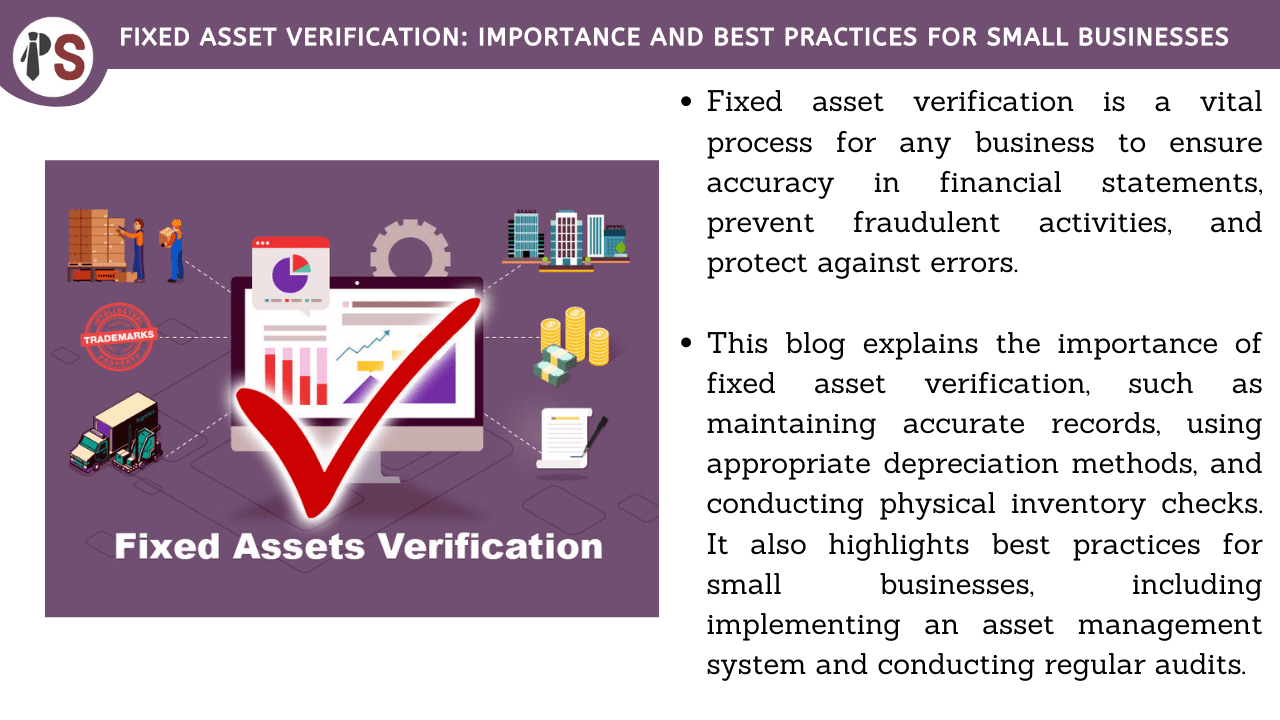
Fixed assets are a significant investment for any business, and it is essential to keep track of these assets to maintain the integrity of the financial statements. Fixed asset verification is the process of ensuring that a company's fixed assets are physically present, properly recorded, and accurately valued. In this blog, we will discuss why fixed asset verification is essential for your business and how to implement best practices.
Compliance: Fixed asset verification helps businesses ensure that they are in compliance with various regulatory bodies, such as the IRS or GAAP. Compliance with these regulations is necessary to avoid penalties and legal issues.
Accurate Financial Statements: Fixed asset verification ensures that the value of fixed assets on the financial statements is accurate, which is critical for tax and other financial reporting purposes.
Asset Protection: Fixed asset verification helps protect businesses from theft, damage, or loss. It also helps in identifying any underutilized or surplus assets, which can be sold or leased, generating revenue for the company.
Establish a comprehensive fixed asset register: This register should include all necessary details such as the asset's location, purchase date, cost, and depreciation method.
Conduct physical inspections regularly: Physically inspect all assets regularly to ensure they are present and in good condition.
Identify and report discrepancies: Any discrepancies identified should be reported immediately to the appropriate personnel, such as the accounting or finance department.
Implement a tagging system: A tagging system helps identify fixed assets easily and ensures that they are not mistakenly removed or relocated.
Utilize fixed asset management software: Fixed asset management software can help streamline the verification process, automate tracking and depreciation, and simplify the reporting process.
Conduct periodic audits: Regular audits can help identify any potential issues, such as missing or misplaced assets, and ensure compliance with accounting standards and regulations.
Fixed asset verification is an essential aspect of managing your business's financial health. By implementing best practices, such as establishing a comprehensive fixed asset register, conducting regular physical inspections, and utilizing fixed asset management software, you can ensure that your financial statements accurately reflect your company's fixed assets. Regular fixed asset verification can also help protect your assets from theft, damage, or loss and generate revenue by identifying underutilized or surplus assets.
At Professional Saathi, we offer a range of business consultancy services that help businesses improve their performance, achieve growth, and overcome challenges.
Copyright 2025 © Created By KTPG PROFESSIONAL SAATHI CORPORATE CONSULTANT PRIVATE LIMITED, All Rights Reserved.
Leave Your Comment